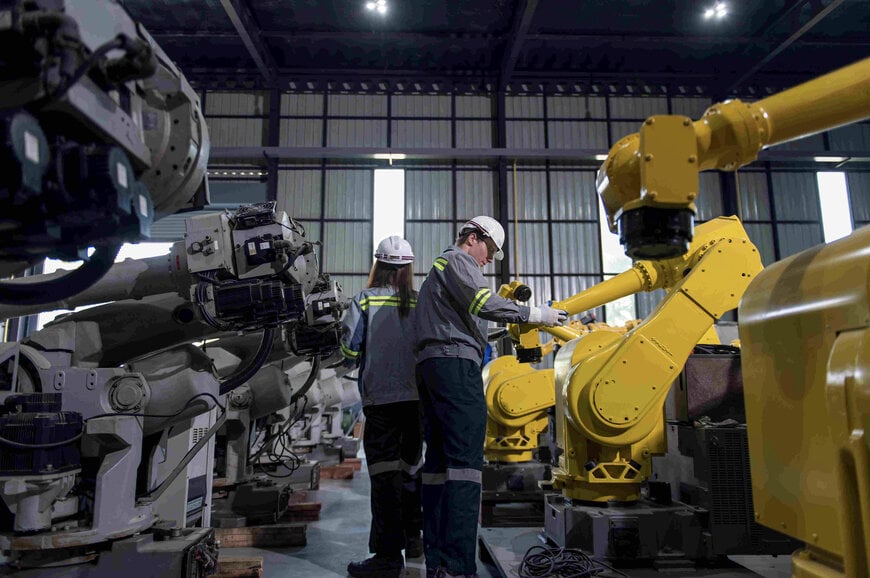Precision Bearings Driving the Rise of Humanoid Robots
Chris Johnson, managing director at SMB Bearings, explains how precision thin-section bearings boosted humanoid robot efficiency, agility, and reliability by reducing weight, saving energy, and enabling compact joints.
www.smbbearings.com

Humanoid robots are no longer just science fiction — they’re stepping into real-world roles across industry. According to the BBC, BMW has already deployed humanoid robots in a US factory, Hyundai has placed an order for tens of thousands from Boston Dynamics, and Tesla aims to introduce several thousand Optimus robots to its manufacturing operations this year.
BMW’s deployment of humanoid robots marks a significant shift in how traditional manufacturing environments are adopting next-generation automation. In its US plant, the company is deploying humanoid robots to handle repetitive and physically demanding tasks and improve operational efficiency while reducing the risk of strain-related injuries among workers. This early-stage use will test how humanoid robots can work alongside people in current factory setups.
Purpose-built for production
While the long-term vision for humanoid robots includes general-purpose helpers that can do everything from loading dishwashers to assembling cars, today’s applications are more focused.
As the International Federation of Robotics (IFR) highlights, most current deployments are single-purpose — targeted at tasks in sectors like automotive and warehousing, which have long driven innovation in industrial robotics.
The IFR notes that, while it’s still unclear whether humanoid robots will provide a scalable, cost-effective alternative to existing automation solutions, applications such as logistics could certainly benefit from humanoid robotics. Tesla, for example, plans to build thousands of Optimus units in 2025 for use in its own plants. The BBC reports that, according to Elon Musk, these robots are expected to handle “useful things” on the production line — starting with simple, repetitive motions but gradually evolving to more complex tasks as the technology matures.
Along with Hyundai’s large-scale investment, these developments signal a major shift in industrial automation — indeed, it seems humanoid robots are already among us. However, their success hinges on one key factor: performance. Robotic limbs, joints and actuators must offer the same — or better — efficiency, reliability and precision as traditional automation. This is where speciality industrial bearings come in.
Why thin-section bearings matter
When wear increases, so does friction, leading to higher energy consumption and reduced efficiency. For this reason, precision thin-section bearings are the go-to choice in high-performance robotic environments. Ceramic and hybrid bearings can be offered as alternatives in harsher environments.
These bearings deliver long service life, low maintenance needs and better reliability. In fast-paced production environments, every gain in uptime and energy efficiency translates into measurable cost savings.
For humanoid robots, size and weight are critical. The form factor must mimic human proportions while housing a complex network of sensors, motors and mechanical joints. This is where thin-section bearings prove essential.
Unlike standard bearings, thin-section variants maintain a small difference between their inner and outer ring diameters, allowing for ultra-compact designs without sacrificing strength. This helps reduce the weight and size of robotic joints, improving agility and conserving power.
These bearings are built with extreme precision. Even minor imperfections in ring roundness can degrade performance, introduce noise or reduce joint accuracy — unacceptable outcomes in tightly controlled automation environments. Specialist bearing manufacturers like EZO ensure each thin-section bearing undergoes rigorous quality checks, guaranteeing flawless operation under repeated use.
A real-world example: smart robotic hands
A collaboration between SMB Bearings and Shadow Robot Company illustrates just how impactful the right bearing choice can be. Tasked with developing a high-precision Smart Grasping System™, Shadow Robot needed reliable motion control in a compact, lightweight format.
SMB supplied custom EZO thin-section bearings with extremely tight dimensional tolerances to ensure accurate joint positioning. These bearings allowed the robotic hand to handle diverse object types with fluid, repeatable movements — an essential capability for flexible manufacturing setups.
By fine-tuning the grease levels and bearing fill, the development team achieved an optimal balance of low friction and controlled movement. Shadow Robot Company reported not only smooth performance but also ease of installation and extended bearing life — both of which are essential in scalable robotic deployments.
Optimising robotics from the inside out
Thin-section bearings are available in a range of materials and configurations to suit varied applications — from SAE52100 chrome steel to 440-grade stainless, and in open, shielded or sealed types. When paired with low-torque, low-noise lubricants, they help maximise bearing performance across temperature extremes, from sub-zero cold storage to high-heat factory environments.
In humanoid robots, these features aren’t just nice to have — they’re mission-critical. With dozens of moving joints and components packed into a human-sized form, every gram saved and every watt conserved matters. The right bearings help reduce total system weight, lower energy draw and extend the service life of motors and actuators.
Choosing the right bearing is about more than size or load — it’s about ensuring seamless integration into compact, high-performance systems built for long-term reliability. Partnering with a specialist bearing supplier helps engineers strike the right balance between durability, precision and space across varied robotic applications.
As humanoid robots become a more visible part of the industrial landscape, it’s easy to focus on the flashy tech — the AI brains, the cloud connectivity and the agile hardware. But none of it works without solid, dependable motion at the core. In robotics, reliability starts small and, often, that means starting with the bearing.
To find out how advanced bearings can drive the next generation of humanoid robotics.
www.smbbearings.com

